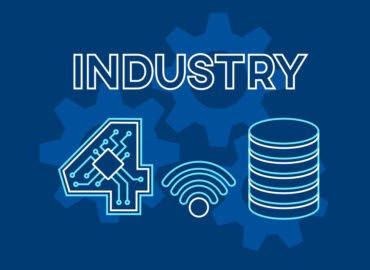
The path to zero waste in EV manufacturing is filled with challenges. By embracing new technologies and practices, the EV industry can move closer to a future where production processes are efficient, cost-effective, and truly sustainable.
The world is steadily shifting towards a more sustainable future, and the electric vehicle industry faces a significant challenge: making headway towards zero waste in manufacturing. While EVs are celebrated for reduced emissions, they aren’t so sustainable in production. Let’s explore the key obstacles preventing EV manufacturers from becoming truly waste-free and what innovative solutions might help overcome these challenges.
Complexities of Material Sourcing
A primary hurdle in zero-waste EV manufacturing begins at the source. Elements used in batteries and other components can cause significant harm to the environment during extraction.
Challenge: Critical materials like lithium, cobalt, and nickel, which are essential for battery production, are extracted through environmentally detrimental mining processes. These processes generate waste and carbon emissions, occur in conflict areas, and can generally conflict with sustainability goals.
Obstacle: The obvious solution is to source sustainable, recycled materials, but this shift is complicated by limited supply, higher costs, and potential concerns about maintaining quality and/or performance standards.
Possible solution: Exploring alternative battery chemistries that rely on more abundant and less harmful materials could reduce reliance on environmentally damaging mining practices. Investing in sustainable mining methods and pushing recycling technologies to the limit to help recover valuable materials could also play a crucial role. Ultimately, manufacturers may find the long-term payoff worth the (relatively) short-term frustration.
Streamlining Complex Supply Chains to Reduce Waste
Like everything else today, the production of EVs involves a vast, interconnected global supply chain from raw material extraction to component assembly. This complexity can quickly devolve into inefficiency and waste, stemming from multiple weak points in the process.
Challenge: Managing the environmental footprint of such extensive supply chains isn’t for the weak at heart. It can be a beast, particularly when disruption causes quick pivots.
Obstacle: Transparency and sustainability is the knee-jerk answer, but this requires advanced coordination among numerous suppliers and partners. Maintaining a communication network like this is easier planned than executed.
Possible solution: New digital tools like blockchain can make transparency easier. They provide a clear view of each step in the product process and enhanced visibility that fights inefficient resource management and waste. Developing closer partnerships with suppliers to share sustainability goals and exploring circular economy practices could also help. As global regulations move towards better sustainability, more companies on the supply chain may find their sustainability goals happening on the same path.
Optimizing Production Lines to Eliminate Waste
Beyond the supply chain, production lines themselves can also be a significant source of waste for many of the same reasons— defects, inefficient processes, and excess materials.
Challenge: The actual production process is still generating waste, including scrap materials, defective parts, and surplus inventory. Each instance of waste can significantly undermine sustainability goals.
Obstacle: Optimizing production lines to minimize waste often requires substantial investment in new technologies, such as automation, robotics, and AI, which can be expensive and complex to implement.
Possible Solution: Implementing digital twins and virtual simulations to model the production process before physical manufacturing begins can help identify potential waste sources and optimize workflows. Lean manufacturing principles, continuous improvement methodologies, and advanced data analytics can further enhance efficiency and minimize waste. And many manufacturers are already exploring these technologies with promising results.
Building Effective Systems for Battery Recycling and Reuse
The challenge of recycling and reusing vehicle batteries becomes more important as EV adoption grows and is encouraged by regulation and government incentives. We’re seeing strong efforts to find ways to handle EV batteries all the way to end of life.
Challenge: End-of-life management for EV components, particularly batteries, remains a significant hurdle. Recycling is still inefficient and costly and lacks widespread infrastructure support.
Obstacle: While recycling is technically possible, scaling these recycling processes to meet growing demand in production requires further technological innovation and investment.
Possible solution: The circular economy principle is critical here. For example, designing batteries with recyclability in mind and finding second-life applications for used batteries can help recover valuable resources and lower the environmental impact. Additionally, new technology and leveraging AI to find new methods for reusing materials (or even entirely new materials) could help.
Reducing the Energy Footprint of EV Manufacturing
Once again…batteries. Their production is an energy-intensive process that contributes significantly to the industry’s overall carbon footprint, in addition to other components. Lowering energy consumption is going to be a big part of achieving sustainability goals.
Challenge: The high energy demands of EV manufacturing is an equation manufacturers must solve before they can approach zero-waste goals.
Obstacle: Switching to renewable energy is costly and still requires significant infrastructure changes amid constant disruption. Additionally, energy-efficient technologies may not be immediately accessible or economical.
Possible Solution: Manufacturers may still make the shift to renewable energy for the long-term payoff rather than immediate gains. Incorporating things like waste heat recovery systems can help reduce overall energy consumption.
Reducing Packaging Waste in Logistics
The transportation of parts and components throughout the supply chain generates significant packaging waste, often using materials that are not recyclable or biodegradable.
Challenge: Minimizing packaging waste while maintaining the safety and integrity of transported parts poses a significant challenge for EV manufacturers.
Obstacle: Alternative packaging solutions, such as reusable or biodegradable materials, may be more expensive or difficult to source in large quantities.
Possible Solution: Sustainable packaging materials and reusable packaging systems can help reduce waste. Optimizing packaging design for minimal material use and implementing returnable packaging programs further support waste reduction efforts.
Navigating the Regulatory Landscape for Zero Waste
Regulations around waste management, recycling, and emissions can vary widely by region, creating a complex regulatory landscape for manufacturers to navigate.
Challenge: Compliance with a patchwork of regional regulations adds operational burdens and costs, making implementing consistent waste management practices difficult.
Obstacle: Some regions may have less stringent regulations or enforcement, resulting in inconsistent practices and making global alignment on sustainability efforts challenging.
Possible Solution: Advocating for global standards and policies that promote zero-waste practices can drive uniform compliance and support more sustainable manufacturing. Collaborating with regulatory bodies to create policies incentivizing sustainable practices is also crucial. This is an opportunity for companies to make a major impact for the better.
Driving Cultural and Organizational Change for Sustainability
Achieving zero waste in EV manufacturing requires a shift in organizational culture and behavior, from adopting new processes to investing in sustainability initiatives.
Challenge: Overcoming resistance to change within organizations is going slow any initiative companies may have toward more sustainable practices. The more radical the change, the more likely stakeholders will be to resist.
Obstacle: Established habits, skepticism about the benefits of zero waste, and a reluctance to invest in new technologies can slow down progress.
Possible Solution: Fostering a culture of sustainability through leadership commitment, clear communication of goals, and employee engagement programs is essential. Providing incentives for adopting sustainable practices and integrating zero-waste objectives into business strategies can help shift mindsets and behaviors.
Moving Forward
While the path to zero waste in EV manufacturing is filled with challenges, innovative solutions and a commitment to sustainability can drive meaningful progress. By addressing these obstacles and embracing new technologies and practices, the EV industry can move closer to a future where production processes are efficient, cost-effective, and truly sustainable.








